Home / Past Newsletters / December 2012
December 2012
Need ideas for simple, practical gifts that will bring joy and a smile to your friends and family? We have some delightful ideas for those who dread traipsing round the mall for that last-minute Christmas shopping!

This is our last newsletter for the year. Yes, it's nearly over - faster than ever before! Thank you so much for your custom. We hope you've had a fabulous time creating soaps and creams and balms, or maybe just using our pure organic oils on your skin.
It's been great chatting with many of you on the phone or by email. We love to hear about what is working well, and we'll do our best to sort out any problems you have.
Have a wonderful holiday season, relaxing and refreshing, and our best wishes for a happy and fulfilling New Year.
In this issue:
What's new...
Organic oils:
Many of you are enjoying our new organic oils, and another one is nearly here: Organic camellia oil. We know it has arrived in New Zealand, and it should be on our doorstep any day.
Camellia oil has been treasured in China and Japan for thousands of years, and is rapidly becoming recognised in the western world as a high-quality ingredient in many preparations. Suitable for all skin types, it is mild and healing for inflamed skin.
Opening hours over Christmas/New Year:
Below we suggest dates for orders that you want to arrive before Christmas - we feel pretty confident that our frantically busy couriers will manage these deadlines.

Auckland City: Order by midnight Wednesday 19th
Outer Auckland: Order by midnight Tuesday 18th
North Island urban: Order by midnight Tuesday 18th
North Island rural delivery: Order by midnight Monday 17th
South Island urban: Order by midnight Tuesday 18th
South Island rural delivery: Order by midnight Monday 17th (or Sunday night if you are really remote!)
With Christmas Day falling during the week, deliveries will be restricted between Christmas and New Year.
For those of you who live in Auckland, we will courier orders on Thursday 27 December (so get your orders in by 9am Thursday).
But for the rest of the country, we will send your orders after all the public holidays are over. We don't want your lovely products to be sitting around for days in the summer heat!
We will get back to normal on Thursday 3 January.
A fabulous vegetarian cookbook...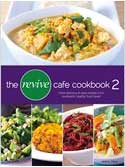
The delighted winner of our competition was Haidee, a vegetarian who "loves it and lives it".
"Hey, thanks a bunch - the book arrived this morning & looks amazing!
I can't wait to start cooking up a storm, what beautiful salads for summer!"
So many of you had compelling reasons why you need a great vegetarian cookbook, we wished we'd had a huge stack to give away! One person (who sadly missed the cut) said, "If I don't win, I'll just have to buy one!" We've found it great value - we are still enthusiastically making meals from its pages.
One of many reasons for eating a vegetarian diet is that New Zealand's farming practices continue to slide away from the ideals of our clean, green image. And it's only through consumer pressure (and financial support for the fighters) that everyday animal cruelty will end. Go to our Facebook page to see how you can help.
Kits for Christmas presents...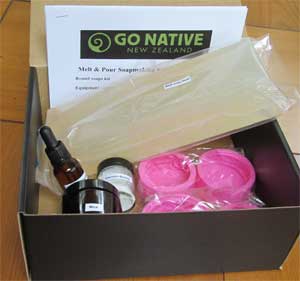
A Go Native kit is a special gift for someone curious about making soap or skincare. All the ingredients, full instructions - success is guaranteed!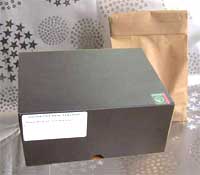 Our soap kits have something for everyone!
Our soap kits have something for everyone!
We have two kinds - Melt & pour, and cold process. They are packed in a stylish black box - except for the mini-kits, which are in a bag.
(Above is one of the melt & pour kits.)
Make your own Christmas gifts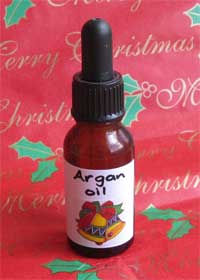
1. If you are in need of a quick gift for friends or workmates, how about buying a 100ml bottle of your favourite oil and five 20ml dropper bottles... and making some labels for them. Currently our most popular oils are organic argan, organic jojoba, and organic rosehip (natural or deodorised) - and using pure, organic oils directly on the skin (body and face) is becoming more and more popular.
No labels? If you'd like a couple of blank labels, include a message in the message box when you order oil and/or bottles.
2. Massage oil makes a thoughtful holiday gift. Mixing your own massage blend can be simple. I've been experimenting with all of our most popular oils, and it seems to me that any of them are great for the casual masseur! Jojoba is a classic massage oil, spreading easily, but you can make a blend starting with almond or rosehip or any other lightish oil. And because every oil contains a different mix of fatty acids, adding a bit of this and a bit of that is just about guaranteed to enhance the final product!
If you want to, add a few drops of your favourite essential oil or fragrance oil.
For something special: include some kawakawa infused oil in your blend. It's great for helping to relieve aches and pains.
3. Here are two recipes from last summer - great for travel, great as a small gift.
Mango butter moisturiser bar
Keep your skin smooth and satisfied with a mango butter bar – the warmth of your skin is enough to create a fine film of moisturiser. The recipe is so easy:
28g beeswax
30g mango butter
42g safflower oil
Melt gently, then if desired, add a few drops of vitamin E and about ¼ teaspoon of your choice of essential oil.
Pour into a mould (or two smaller moulds) before it sets. (It can be warmed up again if necessary!)
Experimenting: You could make an organic version with organic beeswax, organic shea butter, and your favourite organic oil.
Try making it with the beeswax, butter and oil you like best - though you may have to do a bit of adjusting! The great thing about a balm (like this) compared to a cream (containing water) is that you can play with it to get it just right.
Wait till it's completely cold, and see what it's like.
If it's totally rock-hard, you can re-melt and add a tiny bit more oil - or if it's not hard enough, add a bit more beeswax.
Make sure you record exactly what you've done!
Shea Butter Bar (Makes a 200g bar)
Water phase
20g water
Oil phase
140g shea butter
32g Emulsifier O
Last phase
4g hydrolysed wheat protein
2g Geogard 221
few drops of essential oil
Method
Heat water and oil phases separately until they are 65°C.
Combine the two phases and blend.
When the mixture begins to thicken, add the last phase ingredients and blend.
Pour into 1 or 2 moulds and leave 24 hours to set.
To use, just rub the bar over your skin.
4. Simple bugs-away balm
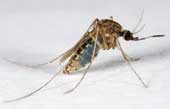 80g olive oil
80g olive oil
16g beeswax
4g citronella essential oil
Gently melt oil and wax, and add essential oil. Pour into a 100g jar.
Citronella keeps mosquitos away if applied every 30 - 60 minutes, because essential oils do evaporate! Lemon Eucalyptus is also used as an insect repellant. If you like its smell, maybe try a combination of the two essential oils.
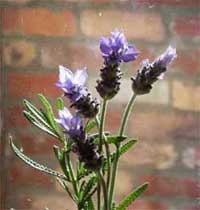
5. Gardener's soap (a little bit scratchy to help remove the soil) is traditionally coloured mauve/purple, and perfumed with lavender oil - but lemon would be refreshing - yellow mica, lemon oil...
Or maybe your mum or auntie or granny would like a rose theme, with a rose mould, rose fragrance oil, a touch of red mica in white soap?
I've used hemp seed fibre at one rounded teaspoon per 50g of melt & pour soap, stirred in after the mica and fragrance.
Another possibility (a paler colour) is crushed apricot shell.
Experimenting:
Because many of you have joined us since the last newsletter, and because you're more likely to have some free time over the coming weeks, we've adapted this section from last time.
Making creams and making cold-process soap is fascinating in part because there's always an element of uncertainty - a hot day, a shade too much sodium hydroxide, turning your back on a cooling cream for a bit too long - factors like these can sometimes lead to unexpected or undesired outcomes. And at other times, something comes out better than ever before, and you're bemused as you try to figure out why!
Writing down every detail as you make something is a really good idea. And once it's ready, add a note about what it's like to use.
If you haven't yet got a special notebook, maybe you could suggest it to Santa?
Write down the date, ingredients, recipe, steps you follow, and what you observe at each step. This info is vital when you decide to make a thicker or thinner version, or try a different ingredient.
Here's a recipe for a simple cream. (The vital ingredients for a simple cream are water, oil, emulsifier and a preservative.) Then there are suggestions for changing the recipe, one step at a time.
Simple cream (Makes 200g)
Water phase
150g water
Oil phase
26g almond oil
10g Emulsifier E
Last phase
2g Geogard 221
few drops of essential oil
Method
Heat water and oil phases separately until they reach 65°C.
Combine the two phases and blend.
When the mixture begins to thicken, add the last phase ingredients and blend.
Pour into jars.
(If you don't have almond oil, you could substitute another light oil such as hemp or maybe rosehip.)
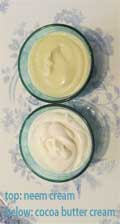 Now try the same recipe but with a heavier oil, such as macadamia - great for feeding mature skin.
Now try the same recipe but with a heavier oil, such as macadamia - great for feeding mature skin.
Or try jojoba oil, which contains liquid waxes that help prevent the skin from drying out.
Again, take notes at every step. The colour will depend on the oil. If you use our unrefined NZ avocado oil, for example, the cream will be a pale green, whereas organic natural rosehip oil will give a yellow cream.
Replacing the oil with a butter gives a cream that's probably too thick for your face, but great for dry calves or dry hands.
You may like to try incorporating other liquids. Replace some or all of the water with a hydrosol, or substitute say 5% of a water-based product such as glycerin or a plant extract.
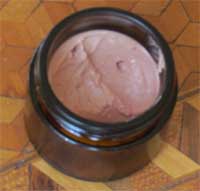
More and more of you have been using our powdered extracts such as alpha-bisabolol and grape seed extract in your products. The grape seed extract is strongly coloured, giving creams a pink colour. See the website for more info.
Infused oils are also useful in creams and oil blends. The most popular is calendula infused oil, which is soothing and healing, ideal for damaged skin or in preparations for babies.
Now you could start another round of experimentation: using less liquid. (There's more info about ratios on the Recipes page on our website.)
You will notice that most of our moisturiser recipes have a combination of oils, maybe with some shea butter or beeswax. So the next step is to try combinations of your favourite oil-phase ingredients. For heavy-duty handcreams, include butter(s) and beeswax. For a face cream, use your favourite oils. Good luck!
Suncare oils
Some vegetable oils have long been used on skin that's exposed to sun - coconut oil is the classic one. Now that skin cancer is such an issue (due to factors such as the depleted ozone layer) we have to ensure that sunburn just doesn't get a chance - and that's especially important for children.
But maybe the pendulum has swung too far. I (Jacqui) have olive skin, so need a reasonable amount of sunshine in order to make Vitamin D. (A very fair person would need a much shorter time.) When I know I'm going to be in the sun for a short time, I use carrier oils traditionally used for sun protection: coconut, sesame, sunflower, etc. I use the best quality organic oils, as I believe they are likely to contain small but significant amounts of nutrients that may be lost when oils are processed or grown with chemical fertilisers.
Some people have noticed that their skin is more resilient in the sun when their diet is full of top-quality fresh fruits and vegetables. Worth a try, as it has other benefits!
Here's a list of oils that may have a SPF of 2-3:

Sesame
Sunflower
Avocado
Camellia
Jojoba
Hazelnut
Virgin coconut
Shea butter
And here's a recipe for a before-sun oil that will care for your skin and may help it deal with those UV rays. (But only for consenting adults, and only if you're exposed for a just a short time - cover up as soon as there's any hint of redness or a feeling of heat.)
Before-sun oil (adapted from Kolbjorn Borseth's book The Aromantic Guide)
55ml sesame oil
15ml sunflower oil or camellia oil
10g shea butter (gently warmed) or avocado oil
10ml jojoba oil
10ml vitamin E
In conclusion
Have a wonderfully restful and refreshing Christmas and New Year.
Eat too much, sleep too much, and do all the summery things you've been dreaming of!
Kind regards
Elinor, Chelsea, & Jacqui

This is our last newsletter for the year. Yes, it's nearly over - faster than ever before! Thank you so much for your custom. We hope you've had a fabulous time creating soaps and creams and balms, or maybe just using our pure organic oils on your skin.
It's been great chatting with many of you on the phone or by email. We love to hear about what is working well, and we'll do our best to sort out any problems you have.
Have a wonderful holiday season, relaxing and refreshing, and our best wishes for a happy and fulfilling New Year.
In this issue:
- What's new: camellia oil, cookbook winner
- Opening hours over Christmas/New Year
- Kits for gifts
- Make your own Christmas gifts
- Recipe: Bugs-away balm
- Experimenting: a note
- Oils for skincare in the sun
What's new...
Organic oils:

Many of you are enjoying our new organic oils, and another one is nearly here: Organic camellia oil. We know it has arrived in New Zealand, and it should be on our doorstep any day.
Camellia oil has been treasured in China and Japan for thousands of years, and is rapidly becoming recognised in the western world as a high-quality ingredient in many preparations. Suitable for all skin types, it is mild and healing for inflamed skin.
Opening hours over Christmas/New Year:
Below we suggest dates for orders that you want to arrive before Christmas - we feel pretty confident that our frantically busy couriers will manage these deadlines.

Auckland City: Order by midnight Wednesday 19th
Outer Auckland: Order by midnight Tuesday 18th
North Island urban: Order by midnight Tuesday 18th
North Island rural delivery: Order by midnight Monday 17th
South Island urban: Order by midnight Tuesday 18th
South Island rural delivery: Order by midnight Monday 17th (or Sunday night if you are really remote!)
With Christmas Day falling during the week, deliveries will be restricted between Christmas and New Year.
For those of you who live in Auckland, we will courier orders on Thursday 27 December (so get your orders in by 9am Thursday).
But for the rest of the country, we will send your orders after all the public holidays are over. We don't want your lovely products to be sitting around for days in the summer heat!
We will get back to normal on Thursday 3 January.
| December | December | January | |
| Mon | 17 | 24 | 31 |
| Tues | 18 | 25 | 1 |
| Wed | 19 | 26 | 2 |
| Thur | 20 | 27 | 3 Back to normal |
| Fri | 21 | 28 | 4 |
A fabulous vegetarian cookbook...

The delighted winner of our competition was Haidee, a vegetarian who "loves it and lives it".
"Hey, thanks a bunch - the book arrived this morning & looks amazing!
I can't wait to start cooking up a storm, what beautiful salads for summer!"
So many of you had compelling reasons why you need a great vegetarian cookbook, we wished we'd had a huge stack to give away! One person (who sadly missed the cut) said, "If I don't win, I'll just have to buy one!" We've found it great value - we are still enthusiastically making meals from its pages.
One of many reasons for eating a vegetarian diet is that New Zealand's farming practices continue to slide away from the ideals of our clean, green image. And it's only through consumer pressure (and financial support for the fighters) that everyday animal cruelty will end. Go to our Facebook page to see how you can help.
Kits for Christmas presents...

A Go Native kit is a special gift for someone curious about making soap or skincare. All the ingredients, full instructions - success is guaranteed!
- Simplest of all is the Lip Balm Kit.
- The Body Butter Kit is also very straightforward.
- For someone who would like to get started on making creams, the Moisturiser Kit is a great option - full instructions and ingredients.
- Making top-quality shampoo and conditioner requires quite a few ingredients. The shampoo kits and the conditioner kit contain everything needed to make your own.
 Our soap kits have something for everyone!
Our soap kits have something for everyone!We have two kinds - Melt & pour, and cold process. They are packed in a stylish black box - except for the mini-kits, which are in a bag.
(Above is one of the melt & pour kits.)
- The melt & pour soap kits are great for kids. It's fun melting the soap and stirring in the gorgeous coloured mica and the fragrant essential oil. Some of you have been ordering a collection of mini-kits - a different one for each child or grandchild.
- The cold-process kits contain sodium hydroxide, which must be used with great care. Making cold-process soap is something for grown-ups - or sensible teenagers.
Make your own Christmas gifts

- Fill dropper bottles with your favourite skin oil, and make labels
- Blend some carrier oils to make a massage oil (labelled with love)
- Make some mango butter moisturiser bars or shea moisturiser bars
- Bugs-Away Balm - make the simple balm below for friends and family spending time outdoors
- Make gardener's soap with Melt and Pour and an exfoliant
- Browse our recipes - how about mixing up some Sugar Scrub? Or making solid shampoo bars for friends and family going camping or travelling?
1. If you are in need of a quick gift for friends or workmates, how about buying a 100ml bottle of your favourite oil and five 20ml dropper bottles... and making some labels for them. Currently our most popular oils are organic argan, organic jojoba, and organic rosehip (natural or deodorised) - and using pure, organic oils directly on the skin (body and face) is becoming more and more popular.
No labels? If you'd like a couple of blank labels, include a message in the message box when you order oil and/or bottles.
2. Massage oil makes a thoughtful holiday gift. Mixing your own massage blend can be simple. I've been experimenting with all of our most popular oils, and it seems to me that any of them are great for the casual masseur! Jojoba is a classic massage oil, spreading easily, but you can make a blend starting with almond or rosehip or any other lightish oil. And because every oil contains a different mix of fatty acids, adding a bit of this and a bit of that is just about guaranteed to enhance the final product!
If you want to, add a few drops of your favourite essential oil or fragrance oil.
For something special: include some kawakawa infused oil in your blend. It's great for helping to relieve aches and pains.
3. Here are two recipes from last summer - great for travel, great as a small gift.
Mango butter moisturiser bar
Keep your skin smooth and satisfied with a mango butter bar – the warmth of your skin is enough to create a fine film of moisturiser. The recipe is so easy:
28g beeswax
30g mango butter
42g safflower oil
Melt gently, then if desired, add a few drops of vitamin E and about ¼ teaspoon of your choice of essential oil.
Pour into a mould (or two smaller moulds) before it sets. (It can be warmed up again if necessary!)
Experimenting: You could make an organic version with organic beeswax, organic shea butter, and your favourite organic oil.
Try making it with the beeswax, butter and oil you like best - though you may have to do a bit of adjusting! The great thing about a balm (like this) compared to a cream (containing water) is that you can play with it to get it just right.
Wait till it's completely cold, and see what it's like.
If it's totally rock-hard, you can re-melt and add a tiny bit more oil - or if it's not hard enough, add a bit more beeswax.
Make sure you record exactly what you've done!
Shea Butter Bar (Makes a 200g bar)
Water phase

20g water
Oil phase
140g shea butter
32g Emulsifier O
Last phase
4g hydrolysed wheat protein
2g Geogard 221
few drops of essential oil
Method
Heat water and oil phases separately until they are 65°C.
Combine the two phases and blend.
When the mixture begins to thicken, add the last phase ingredients and blend.
Pour into 1 or 2 moulds and leave 24 hours to set.
To use, just rub the bar over your skin.
4. Simple bugs-away balm
 80g olive oil
80g olive oil16g beeswax
4g citronella essential oil
Gently melt oil and wax, and add essential oil. Pour into a 100g jar.
Citronella keeps mosquitos away if applied every 30 - 60 minutes, because essential oils do evaporate! Lemon Eucalyptus is also used as an insect repellant. If you like its smell, maybe try a combination of the two essential oils.

5. Gardener's soap (a little bit scratchy to help remove the soil) is traditionally coloured mauve/purple, and perfumed with lavender oil - but lemon would be refreshing - yellow mica, lemon oil...
Or maybe your mum or auntie or granny would like a rose theme, with a rose mould, rose fragrance oil, a touch of red mica in white soap?
I've used hemp seed fibre at one rounded teaspoon per 50g of melt & pour soap, stirred in after the mica and fragrance.
Another possibility (a paler colour) is crushed apricot shell.
Experimenting:
Because many of you have joined us since the last newsletter, and because you're more likely to have some free time over the coming weeks, we've adapted this section from last time.
Making creams and making cold-process soap is fascinating in part because there's always an element of uncertainty - a hot day, a shade too much sodium hydroxide, turning your back on a cooling cream for a bit too long - factors like these can sometimes lead to unexpected or undesired outcomes. And at other times, something comes out better than ever before, and you're bemused as you try to figure out why!
Writing down every detail as you make something is a really good idea. And once it's ready, add a note about what it's like to use.
If you haven't yet got a special notebook, maybe you could suggest it to Santa?
Write down the date, ingredients, recipe, steps you follow, and what you observe at each step. This info is vital when you decide to make a thicker or thinner version, or try a different ingredient.
Here's a recipe for a simple cream. (The vital ingredients for a simple cream are water, oil, emulsifier and a preservative.) Then there are suggestions for changing the recipe, one step at a time.
Simple cream (Makes 200g)
Water phase
150g water
Oil phase
26g almond oil
10g Emulsifier E
Last phase
2g Geogard 221
few drops of essential oil
Method
Heat water and oil phases separately until they reach 65°C.
Combine the two phases and blend.
When the mixture begins to thicken, add the last phase ingredients and blend.
Pour into jars.
(If you don't have almond oil, you could substitute another light oil such as hemp or maybe rosehip.)
 Now try the same recipe but with a heavier oil, such as macadamia - great for feeding mature skin.
Now try the same recipe but with a heavier oil, such as macadamia - great for feeding mature skin.Or try jojoba oil, which contains liquid waxes that help prevent the skin from drying out.
Again, take notes at every step. The colour will depend on the oil. If you use our unrefined NZ avocado oil, for example, the cream will be a pale green, whereas organic natural rosehip oil will give a yellow cream.
Replacing the oil with a butter gives a cream that's probably too thick for your face, but great for dry calves or dry hands.
You may like to try incorporating other liquids. Replace some or all of the water with a hydrosol, or substitute say 5% of a water-based product such as glycerin or a plant extract.

More and more of you have been using our powdered extracts such as alpha-bisabolol and grape seed extract in your products. The grape seed extract is strongly coloured, giving creams a pink colour. See the website for more info.
Infused oils are also useful in creams and oil blends. The most popular is calendula infused oil, which is soothing and healing, ideal for damaged skin or in preparations for babies.
Now you could start another round of experimentation: using less liquid. (There's more info about ratios on the Recipes page on our website.)
You will notice that most of our moisturiser recipes have a combination of oils, maybe with some shea butter or beeswax. So the next step is to try combinations of your favourite oil-phase ingredients. For heavy-duty handcreams, include butter(s) and beeswax. For a face cream, use your favourite oils. Good luck!
Suncare oils
Some vegetable oils have long been used on skin that's exposed to sun - coconut oil is the classic one. Now that skin cancer is such an issue (due to factors such as the depleted ozone layer) we have to ensure that sunburn just doesn't get a chance - and that's especially important for children.
But maybe the pendulum has swung too far. I (Jacqui) have olive skin, so need a reasonable amount of sunshine in order to make Vitamin D. (A very fair person would need a much shorter time.) When I know I'm going to be in the sun for a short time, I use carrier oils traditionally used for sun protection: coconut, sesame, sunflower, etc. I use the best quality organic oils, as I believe they are likely to contain small but significant amounts of nutrients that may be lost when oils are processed or grown with chemical fertilisers.
Some people have noticed that their skin is more resilient in the sun when their diet is full of top-quality fresh fruits and vegetables. Worth a try, as it has other benefits!
Here's a list of oils that may have a SPF of 2-3:

Sesame
Sunflower
Avocado
Camellia
Jojoba
Hazelnut
Virgin coconut
Shea butter
And here's a recipe for a before-sun oil that will care for your skin and may help it deal with those UV rays. (But only for consenting adults, and only if you're exposed for a just a short time - cover up as soon as there's any hint of redness or a feeling of heat.)
Before-sun oil (adapted from Kolbjorn Borseth's book The Aromantic Guide)
55ml sesame oil
15ml sunflower oil or camellia oil
10g shea butter (gently warmed) or avocado oil
10ml jojoba oil
10ml vitamin E
In conclusion

Have a wonderfully restful and refreshing Christmas and New Year.
Eat too much, sleep too much, and do all the summery things you've been dreaming of!
Kind regards
Elinor, Chelsea, & Jacqui
